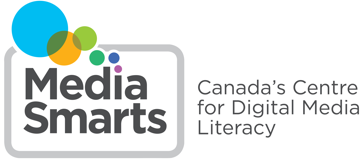
Spotting Deepfakes
Have you ever seen a photo or video online that seemed too good to be true? With today's technology, it's getting harder and harder to tell what's real and what's fake, especially with things called deepfakes.
Printable activities for younger children
These printable activity sheets introduce basic media literacy skills and concepts and are suitable for use in homes, schools and libraries. They can be completed independently, but children will learn more if you discuss the activities with them. Younger children may need help reading the instructions and completing some activities.

Break the Fake: Spotting hate propaganda
What do we mean by propaganda?
- Propaganda tries to get you to believe in an idea or to feel a certain way.
- Propaganda convinces you by provoking your emotions instead of making a logical argument.
Not all propaganda is bad! It can inspire positive emotions like love, pride and empathy. It can persuade us to do things like putting on seatbelts or brushing our teeth.
Hate propaganda is different: it tries to make us fear and distrust another group of people.

The Hero Project: Authenticating Online Information
Students are introduced to Internet search skills through researching a personal hero. By focusing on the early parts of the research process, students learn to select well-defined topics, ask relevant research questions and select effective keywords. Students then present the information they have found to their classmates in the form of a media product.

Deconstructing Web Pages - Lesson
In this lesson, students apply the "5Ws of Cyberspace" to sources of information they find online. Assuming the role of a student researching a science project, students must authenticate the information in an online article about the artificial sweetener, aspartame.
